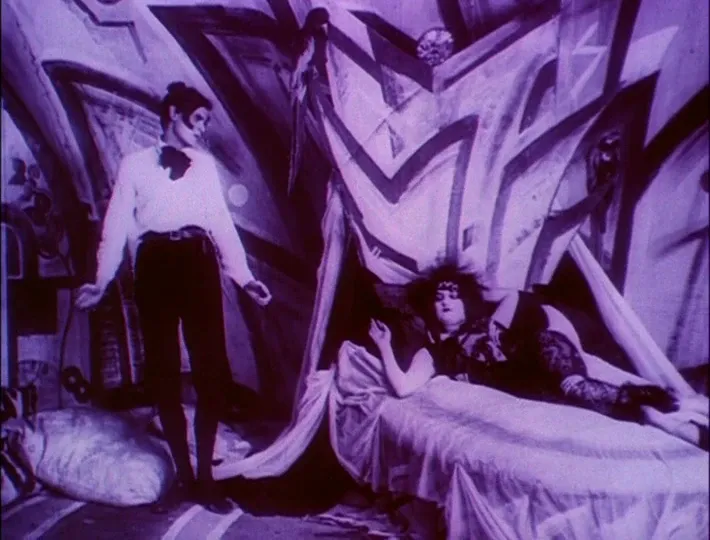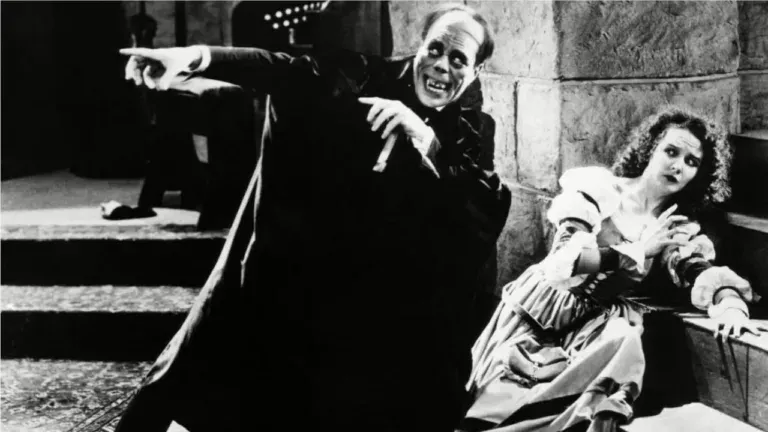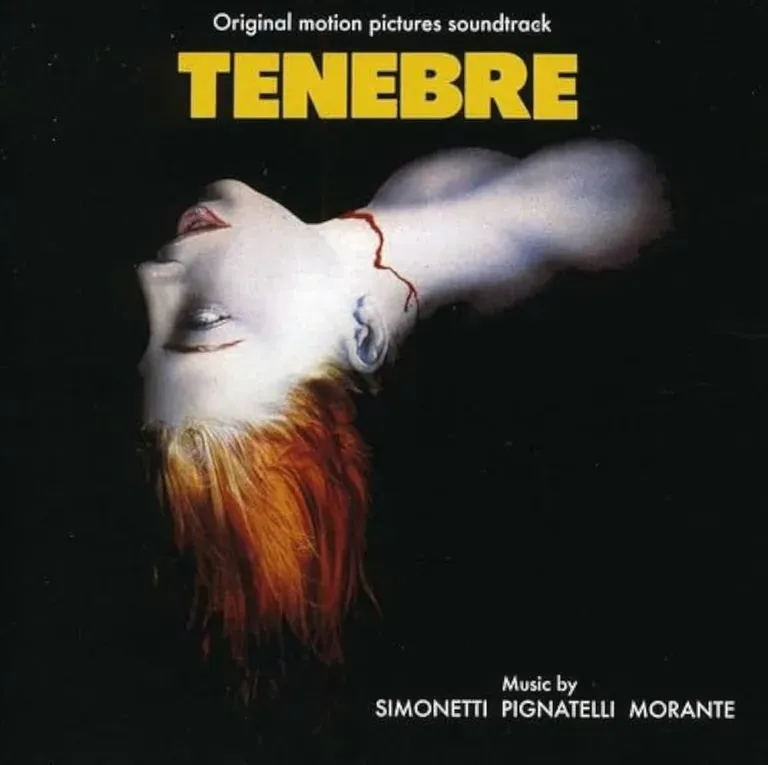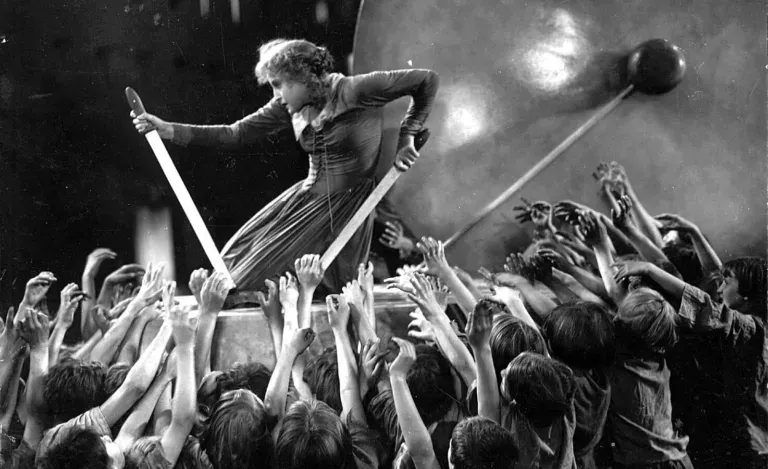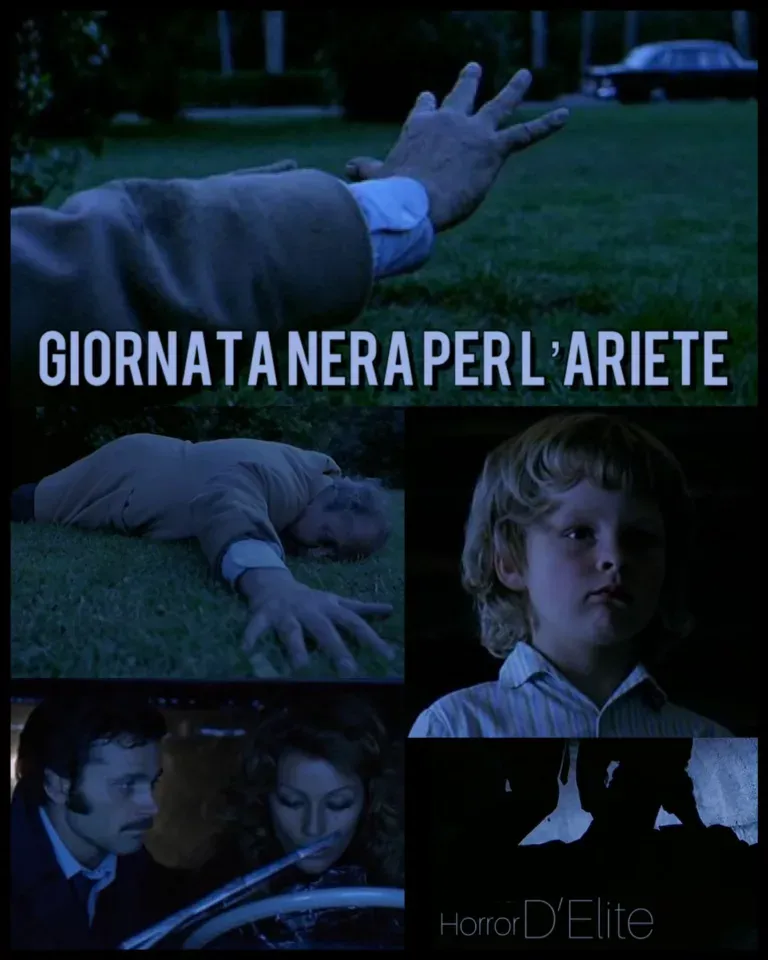Genuine
Genuine
by Robert Wiene (1920)
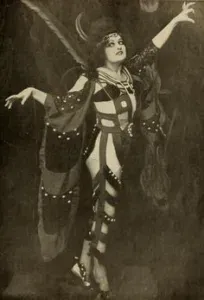 The painter Percy, after completing the portrait of the bloodthirsty priestess Genuine, becomes so bewitched by it that he locks himself in his house and stops interacting with anyone.
The painter Percy, after completing the portrait of the bloodthirsty priestess Genuine, becomes so bewitched by it that he locks himself in his house and stops interacting with anyone.
One night, the painting comes to life, and Genuine escapes only to find herself imprisoned by Lord Melo. He falls in love with her and locks her in a strange, impenetrable glass cage.
Genuine manages to escape from this prison as well and meets the young barber Florian, who becomes captivated by her. Manipulated by the woman, he kills Lord Melo. However, when the priestess asks him to commit suicide, Florian resists and flees from her.
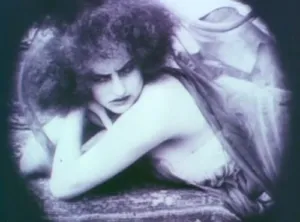 Percy arrives and, seeing the creature he painted in the flesh, falls victim to Genuine’s spell. This time, even the priestess seems to be in love, but theirs is a short-lived romance.
Percy arrives and, seeing the creature he painted in the flesh, falls victim to Genuine’s spell. This time, even the priestess seems to be in love, but theirs is a short-lived romance.
Informed by the barber Florian, the villagers rush to the mansion to destroy the bloodthirsty witch once and for all. However, Florian is determined to reclaim Genuine… or prevent anyone else from doing so at any cost…
Reflections
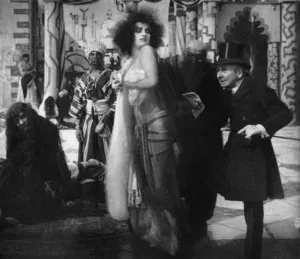 A distinctive aspect of Genuine is its visual aesthetic, which employs distorted and surreal sets to create a haunting and dreamlike atmosphere, typical of the German Expressionist movement, reflected prominently in this film. The plot revolves around the character of Genuine, a mysterious and enigmatic woman who seduces and manipulates men, leading them to ruin. The set design plays a fundamental role in the film, helping construct a reality that defies logic and natural order. The film is an example of how cinema of the era explored themes of madness, obsession, and the destructive power of passion.
A distinctive aspect of Genuine is its visual aesthetic, which employs distorted and surreal sets to create a haunting and dreamlike atmosphere, typical of the German Expressionist movement, reflected prominently in this film. The plot revolves around the character of Genuine, a mysterious and enigmatic woman who seduces and manipulates men, leading them to ruin. The set design plays a fundamental role in the film, helping construct a reality that defies logic and natural order. The film is an example of how cinema of the era explored themes of madness, obsession, and the destructive power of passion.
Conclusions
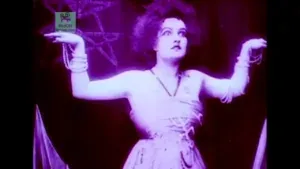 Genuine is considered an interesting work within the landscape of German silent cinema. Its experimental nature and unique visual approach make it a significant example of how silent films could explore complex psychological themes and push beyond the limits of realistic representation.
Genuine is considered an interesting work within the landscape of German silent cinema. Its experimental nature and unique visual approach make it a significant example of how silent films could explore complex psychological themes and push beyond the limits of realistic representation.
 Subscribe to our YouTube channel.
Subscribe to our YouTube channel.
If you love vintage films, take a look at our Retroterror section.
